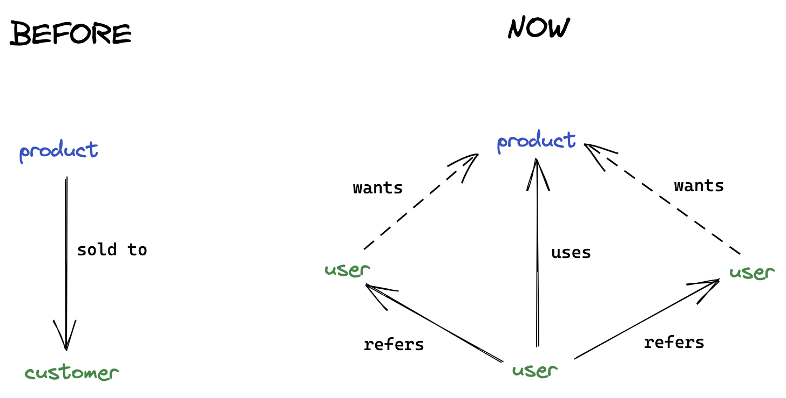
OpenView explains Product-led Growth in a way that totally buries the lede:
Product-led growth (PLG) is an end user-focused growth model that relies on the product itself as the primary driver of customer acquisition, conversion, and expansion.
Turns out, OpenView touches on the core idea halfway down the page:
Invest in robust product data that allows teams to track, measure, and analyze user behavior. Run go-to-market experiments that lead to incremental improvements to the user journey.
This idea of experimenting, testing, doubling down on what works and stopping what doesn’t is the most undervalued theme common across all sustainable growth engines.
Experimentation
Undervalued in practice and overlooked in executive reviews, experimentation and iterative learning form the ‘secret sauce’ behind every lasting company.
When Henry Ford started the Ford Motor Company in 1903 to capitalize his automotive engineering talent, he introduced five models — A, B, C, F, and K — before he launched the famous Model T in Oct 1908.
Walmart’s founder, Sam Walton similarly explained, “[Our first Walmart store] was totally an outgrowth of what we’d been doing since 1945 — another instance of me being unable to leave well enough alone, another experiment. And like most overnight successes, it was about twenty years in the making.”
The role of experimentation is no less remarkable in the growth of nations. Unlike the former Soviet Union, the Chinese government allowed different cities to experiment with labor and land market liberalization before expanding successful experiments to the entire country.
Earlier, running experiments required moving atoms, building cars, setting up stores, and transforming cities. Moving bits today, the top five tech companies (Apple, Amazon, Microsoft, Facebook, Alphabet) account for 27.6% of the S&P500 as of Dec 2020. While their paths have been wildly different, the most common theme across them all has been the muscle they’ve built for designing and scaling the number of experiments they can run. Why have successful companies essentially become experimenters-at-scale?
First Principles
Growth is a function of your core product value and the iterative loops that expose your prospective customers to this value. In terms of metrics,
Core product value is reflected in customer retention. If you have no retention, you can have no growth.
Demand generation that breaks down to: (a) how do you get people in the door (top of the funnel), (b) how quickly can they realize their goals (time to value, lead qualification), (c) how do you help them realize their goals as regularly as possible so they can develop skin in the game (time to close).
So what’s changed now?
Automating Demand Generation
The idea of product driving usage/engagement and retention is straightforward and has been around for decades. Over the last two decades, software products have progressively become so good that they’re now bought, not sold. Automated demand generation is what the world calls Product-led Growth these days.

Product-led Growth (PLG) doesn’t require virality built into the product. Zoom and Calendly may have viral loops built-in, but PLG is more than viral signups. It’s about using behavioral data to enable users to self-qualify themselves as prospective paying customers.
Why experiment?
Experimentation is the oldest data generation, behavioral analysis, and decision intelligence tool in business. At Statsig, our team has seen QE (Quick Experiments) and Weblabs in action at Facebook and Amazon respectively. Other tech companies such as Uber, Lyft, Airbnb, and Spotify have also built their own experimentation platform.
Experiments help us pre-frame the decision criteria without being biased by data. This allows us to make decisions based on the facts we gather, instead of constructing a case that serves a predetermined position. Experiments become essential when the facts you have are not the facts you need. The most interesting scenarios are when you have to make leaps with partial data.
Unfortunately, there is no publicly available tool to rapidly design and run high-quality experiments at scale.
Our customers say that they’ve learned the hard way that experiments must be easy to set up and results should be straightforward to understand. Everyone should be able to run experiments and review results. Experiments must also show the holistic impact on the business, not just one metric at the cost of another.
Experiments build speed
Most importantly, our customers say that experiments enable them to move faster. Experiments generate data, and data turns most decisions into no-ops. When individuals have data, they no longer need to go to their business leader to make a judgment call.
And when every individual in the team can run experiments to generate data, the whole team generates more data, making faster and higher quality decisions as a team.